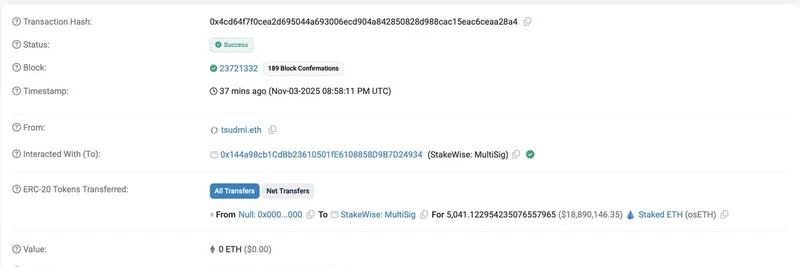Hey folks, if you're plugged into the DeFi world, you've likely caught wind of the massive Balancer exploit that shook things up on November 3, 2025. This incident saw over $116 million drained from various liquidity pools due to a vulnerability in Balancer's V2 smart contracts. But amid the chaos, StakeWise DAO stepped up big time, recovering a hefty chunk of the stolen assets. Let's break it down step by step.
Understanding the Balancer V2 Exploit
Balancer is a popular decentralized finance (DeFi) protocol that acts like an automated market maker (AMM), allowing users to create and manage liquidity pools with customizable token weights. Unlike traditional AMMs like Uniswap, Balancer offers more flexibility for multi-asset pools.
The exploit targeted a flaw in how Balancer's V2 vaults handled contract interactions during pool initialization. Attackers deployed malicious contracts that manipulated authorizations and callbacks, bypassing security checks and draining funds from interconnected pools. This happened rapidly across multiple blockchains, including Ethereum, Arbitrum, Base, and others.
Total losses? A staggering $116 million, mostly in liquid staked ETH variants like WETH, wstETH (Wrapped Staked ETH from Lido), osETH (StakeWise Staked ETH), frxETH, rsETH, and rETH. On Ethereum alone, about $100 million was siphoned off. The attacker quickly swapped some of these for ETH and USDC using protocols like CowSwap.
In response, Balancer's team acknowledged the issue, urged users to withdraw funds and revoke approvals, and even offered a 20% white hat bounty for the return of the stolen assets. Other projects like Berachain halted operations to mitigate risks.
For more on Balancer, check out their official site here.
How the Exploit Hit StakeWise
StakeWise is a liquid staking platform on Ethereum and Gnosis Chain, letting users stake ETH or GNO while staying liquid through tokens like osETH and osGNO. These tokens represent staked assets and can be used in DeFi for yields without locking up capital.
In the Balancer hack, the attacker targeted pools involving osETH and osGNO, stealing around 6,851 osETH (worth about $26 million at the time) and 13,495 osGNO (around $1.7 million). This represented a significant hit to liquidity providers in those pools.
But StakeWise didn't sit idle. Just hours after the exploit, their DAO emergency multisig swung into action.
The Recovery Operation
Using a series of emergency multisig transactions, StakeWise recovered 5,041 osETH—that's 73.5% of the stolen amount, valued at roughly $19 million—and the entire 13,495 osGNO. The remaining osETH couldn't be retrieved because the exploiter had already converted it to ETH.
How did they pull this off? While full details await the post-mortem, it seems they leveraged open-source tools from Safe (formerly Gnosis Safe) and coordinated with Balancer, Gnosis Chain teams, and security experts like @rimeissner, c0ffeebabe_eth, and @pcaversaccio. This collaboration highlights the power of open standards in crypto during crises.
Here's a screenshot of one of the recovery transactions on Ethereum:
And another from the series, likely on Gnosis Chain:
You can view the original thread on X for the announcement here.
Returning Funds and Looking Ahead
StakeWise has committed to distributing the recovered funds pro-rata to affected users based on their pre-exploit balances. This means if you had liquidity in the impacted pools, you'll get back a fair share.
A detailed post-mortem is coming soon, which should shed more light on the recovery mechanics and preventive measures. In the meantime, this event underscores the importance of robust security in DeFi—regular audits, emergency protocols, and community collaboration can make all the difference.
Why This Matters for the Crypto Community
Exploits like this remind us that DeFi, while innovative, isn't without risks. For meme token enthusiasts and blockchain practitioners, understanding these incidents helps in navigating liquid staking and liquidity provision safely. StakeWise's quick recovery not only protects users but also boosts confidence in Ethereum's ecosystem, potentially stabilizing ETH prices by reducing dump risks from stolen tokens.
If you're staking with StakeWise or similar platforms, always monitor approvals and consider using tools like Revoke.cash to manage risks. Stay tuned to Meme Insider for more updates on DeFi news and meme token insights!


